Most pilots are pros, but even experienced captains can slip up.
“The traveling public likes to think of its pilots as somewhat superhuman,” says Patrick Smith, “which has never been fair to pilots as people.” A flyboy himself, Smith has written Salon’s “Ask the Pilot” column since 2002. He also hosts the highly informative website of the same name. “Like any professionals, we are liable to make mistakes. Fortunately the vast majority of these mistakes, however inevitable, are minor.”
Also fortunately, these blunders are exceedingly rare. But when they do happen, it’s only natural that they attract attention. And when they don’t result in actual injury, we can safely snicker.
The bottom line? “We’re living through the safest ever stretch in aviation history,” says Smith. Consider the numbers. According to the Federal Aviation Administration, American airspace hosted more than 22 million commercial flights in 2009—that’s 60,000 each day—with more than 135,000 pilots at the stick. So while there may be pilots behaving badly, they’re in the minority.
Out of Contact
In 2008, an Air India flight headed for Mumbai from Dubai overshot its destination by more than 350 miles. According to Agence France-Presse (AFP), a source told the Times of India that the pilots were napping. The report said that air traffic control became so concerned about a hijacking that they “buzzed the cockpit and woke up the pilots, who turned the plane around.” Air India has denied this; Mumbai’s airport manager claims the aircraft suffered a communications failure.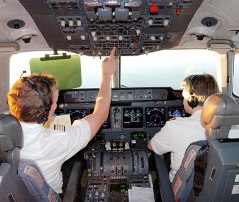
Photo: Kroener / vario images
Distracted by Cars and Girls?
Extraneous conversations are prohibited during takeoff and landings for good reason: flying is complicated. According to a transcript released by the National Transportation Safety Board, US Airways Express pilots Thomas Joseph Morrow and Robert Eugene Saltsgaver III were gabbing about Corvettes and bygone prom dates during takeoff from Charleston, WV, in early 2008. When a warning light indicated that his flaps were set wrong, Morrow aborted takeoff. According to CNN, the jet came to a halt “about 100 feet short of the edge of a steep hillside.” No one was hurt.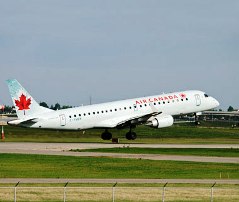
Photo: Bayne Stanley / Alamy
Depressed and Distressed
Sometimes, a bad choice of words is worse than making a bad decision. When the pilot in charge of flying an Air Canada jet from Toronto to Paris in 2008 told his chief steward, Hugh Bouchard, “he had nothing to lose” because “he was being fired anyway,” the attendant became concerned. According to The Canadian Press, four crew members subsequently refused to fly. They were replaced, and the flight was allowed to take off. Two years later, a judge sided with the crew members’ union. According to the court, whether the pilot was suicidal or not, his unwise statements should’ve prompted Air Canada to investigate further.
Photo: Charles Polidano / Touch The Skies / Alamy
Pugilistic Pilots
Despite the myth that modern jets can “fly themselves,” piloting a plane actually requires the full attention of both pilot and copilot. Which makes the actions of captain Ranbir Arora and copilot Aditya Chopra that much more mind-boggling. During Air India flight IC884 from the United Arab Emirates to Delhi in October 2009, the two men came to blows with two colleagues at 30,000 feet. The brawl spilled into the cabin, where a female crew member “hit the cockpit door with such force that she started bleeding,” according to the Times of India.
Photo: Image Source / Alamy
Overshot the Runway (and Then Some)
After their Airbus 320 overshot its destination—the Minneapolis/St. Paul airport—by 150 miles in October 2009, pilot Richard Cole and his first officer, Timothy Cheney, told investigators they’d been concentrating so intently on their laptops (itself a violation of company policy) that they forgot to land. At the time, some aviation experts speculated that they were sleeping, since they were out of contact long enough to attract the National Guard’s attention. (The pilots deny this.) They didn’t realize their mistake until a flight attendant tipped them off. They agreed to have licenses revoked without protest in March 2010.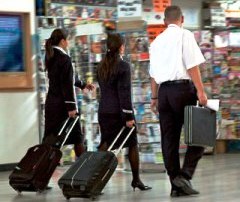
Photo: Mihaela Ninic / Alamy
Disrobed and Disorderly
No one likes a layover, least of all regional pilots. According to Salon’s “Ask the Pilot” columnist Patrick Smith, they “can face a 14-hour duty day with six or seven legs and a nine-hour layover at a motel.” In 2008, pilot Jeffrey Paul Bradford tried to spice up his time in Harrisburg, PA, with stewardess Adrianna Connor. After dinner and drinks, the Pinnacle Airlines employees dashed into the nearby woods for a romp. When they got separated, she got lost and he hid in a barn.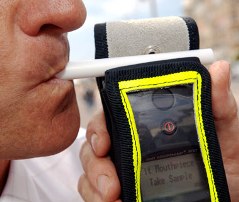
Photo: Jack Sullivan / Alamy
Too Tipsy to Fly
Thanks to strict industry regulation and random testing, drunk pilots are increasingly rare. Still, passengers and crew members should remain vigilant. In November 2009, pilot Erwin Washington was acting so strangely at London’s Heathrow Airport that his crew alerted the tower. After a “frantic race” through the terminal, police prevented the takeoff of United Flight 949 and administered a breath test. Washington failed; a subsequent blood test put him at 2.5 times over the legal limit. He was eventually given a suspended sentence and sent to rehab.
Photo: Transtock Inc. / Alamy
Pilot Needs Better Excuse
Not every drunk pilot is caught before takeoff. In 1990, three Northwest pilots were found to be drunk after completing their flight from Fargo to Minneapolis (according to newly implemented federal guidelines for pilots). The L.A. Times reports that captain Norman Prouse did not deny having drunk heavily the night before. But, his attorney argued, as an alcoholic who had been drinking for 35 years, he had built up a tolerance to alcohol and did not get drunk easily. Prouse got 16 months in jail—just about one month for every rum and Diet Coke he had reportedly enjoyed.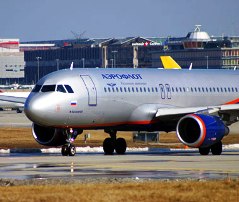
Photo: Dean Shults / Alamy
Slurring Worries Passengers
When Aeroflot pilot Alexander Cheplevsky made a slurred announcement before a 2008 takeoff from Moscow airport, several passengers questioned his sobriety—and they didn’t keep it to themselves. As panic spread through the cabin, Aeroflot representatives assured them that the “aircraft practically flew itself,” according to the Times of London. Cheplevsky was removed from the flight. Though Aeroflot has denied that Cheplevsky was drunk, they apologized for nearly allowing him to fly the plane.
Photo: Jochen Tack / Alamy

No comments:
Post a Comment